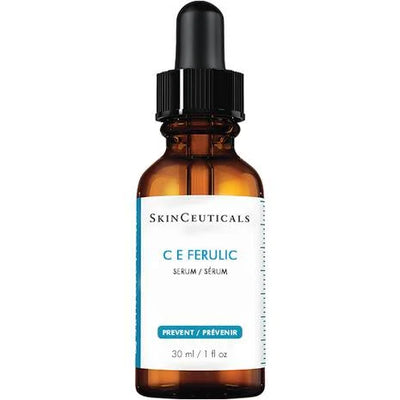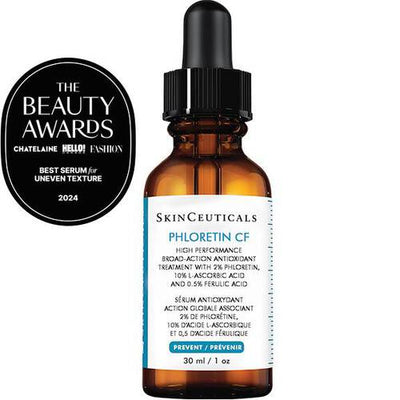The Role Of Vitamin C In Skin Care and How to Choose the Right One
Oct 24, 2025
How to Choose the Right Form for Your Skin Type and Concern
Vitamin C has become a cornerstone in modern skincare, and for good reason. Known for its brightening, antioxidant, and collagen-boosting benefits, it’s one of the most researched and dermatologist-recommended ingredients. But not all Vitamin C products are created equal. With a growing number of derivatives and formulations on the market, choosing the right one for your skin can be overwhelming.
In this article, we explain the science behind Vitamin C, explain its different forms, and help you identify which one best suits your skin type and concern.
What Does Vitamin C Actually Do for the Skin?
Vitamin C (ascorbic acid) is a powerful antioxidant that:
- Fights free radical damage caused by UV exposure and pollution
- Helps fade dark spots and post-acne marks
- Stimulates collagen production to reduce fine lines and wrinkles
- Even out skin tone for a brighter, more radiant complexion
But these benefits depend heavily on the form of Vitamin C used, how it’s formulated, and how it’s stored.
Understanding Vitamin C Derivatives
Vitamin C can be unstable in its purest form (L-Ascorbic Acid), so researchers have developed gentler and more stable derivatives. Here are the most common ones:
| Form | Best For | Skin Type |
|---|---|---|
| L-Ascorbic Acid (LAA) | Maximum potency, anti-ageing | Normal to oily, non-sensitive |
| Ascorbyl Glucoside | Gentle brightening | Sensitive skin |
| Magnesium Ascorbyl Phosphate (MAP) | Hydrating and soothing | Dry, sensitive skin |
| Sodium Ascorbyl Phosphate (SAP) | Acne-prone, antimicrobial | Oily or acne-prone skin |
The effectiveness of a Vitamin C serum isn’t just about the type of derivative, it also depends on how it’s formulated. Pure L-Ascorbic Acid is notoriously unstable and degrades quickly with exposure to light and air. That’s why packaging (dark glass bottles, airtight dispensers) is crucial.
Another key factor is pH. Research by Dr. Sheldon Pinnell, founder of SkinCeuticals, showed that Vitamin C absorbs best at a low pH (around 2.0–3.5). This helps it stay in its active form and penetrate the skin more effectively. However, lower pH formulas can irritate sensitive skin, making gentler derivatives like MAP or Ascorbyl Glucoside better options for those users.
Choosing the Right Vitamin C for Your Skin
For Sensitive or Redness-Prone Skin
Try: Ascorbyl Glucoside or MAP
Product Pick: SkinBetter Science Alto Advanced Defense and Repair Serum – Multi-antioxidant formula including stabilized Vitamin C
For Acne-Prone or Oily Skin
Try: Sodium Ascorbyl Phosphate (SAP)
Product Picks:
-
- SkinCeuticals Silymarin CF – Combines Vitamin C with Silymarin for oil control and antioxidant protection
- SkinBetter Science Alto Advanced Defense and Repair Serum – Helps reduce inflammation and oil production
For Dry or Mature Skin
Try: MAP or L-Ascorbic Acid (with caution)
Product Picks:
-
- SkinCeuticals C E Ferulic – Iconic 15% LAA + Vitamin E + Ferulic Acid for deep anti-aging support
- SkinBetter Science Alto Advanced Defense and Repair Serum – Supports collagen and hydration
For Combination or Normal Skin
Try: Phloretin CF or stable forms like MAP
Product Picks:
-
- SkinCeuticals Phloretin CF – Evens out skin tone and improves texture
- SkinBetter Science Alto Advanced Defense and Repair Serum – Versatile and suitable for daily maintenance
Tips for Using Vitamin C Effectively
- Use in the morning to protect against environmental stress.
- Pair with sunscreen – Vitamin C boosts your SPF’s effectiveness.
- Store in dark, air-tight containers – it degrades with light and oxygen.
- Start slowly if you’re new: 2–3x per week and build up.
Final Thoughts
Vitamin C is one of the most transformative ingredients in skincare, but only when used correctly. By understanding the different types of Vitamin C and matching them to your unique skin type, you’ll unlock the full benefits without irritation or wasted product. Whether you’re aiming for a brighter complexion, reduced signs of ageing, or clearer skin, there’s a Vitamin C solution tailored just for you.






